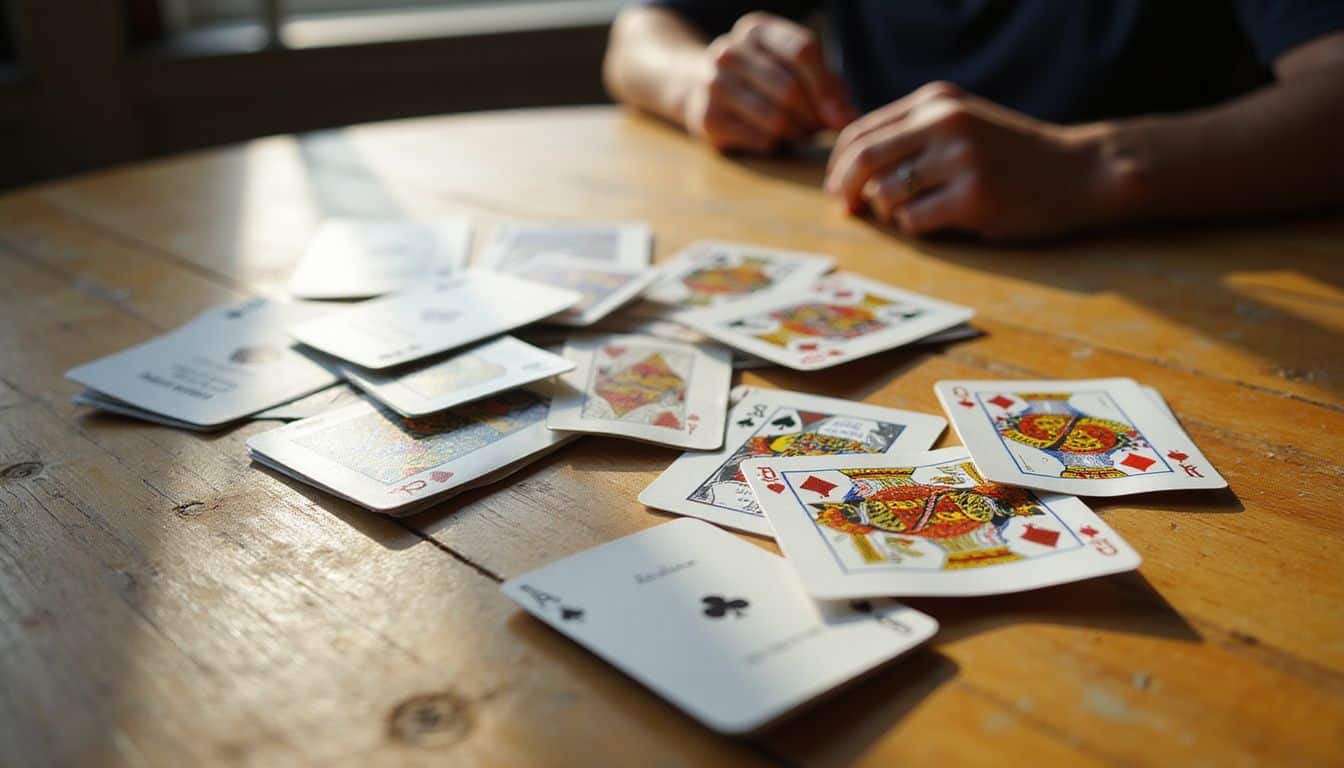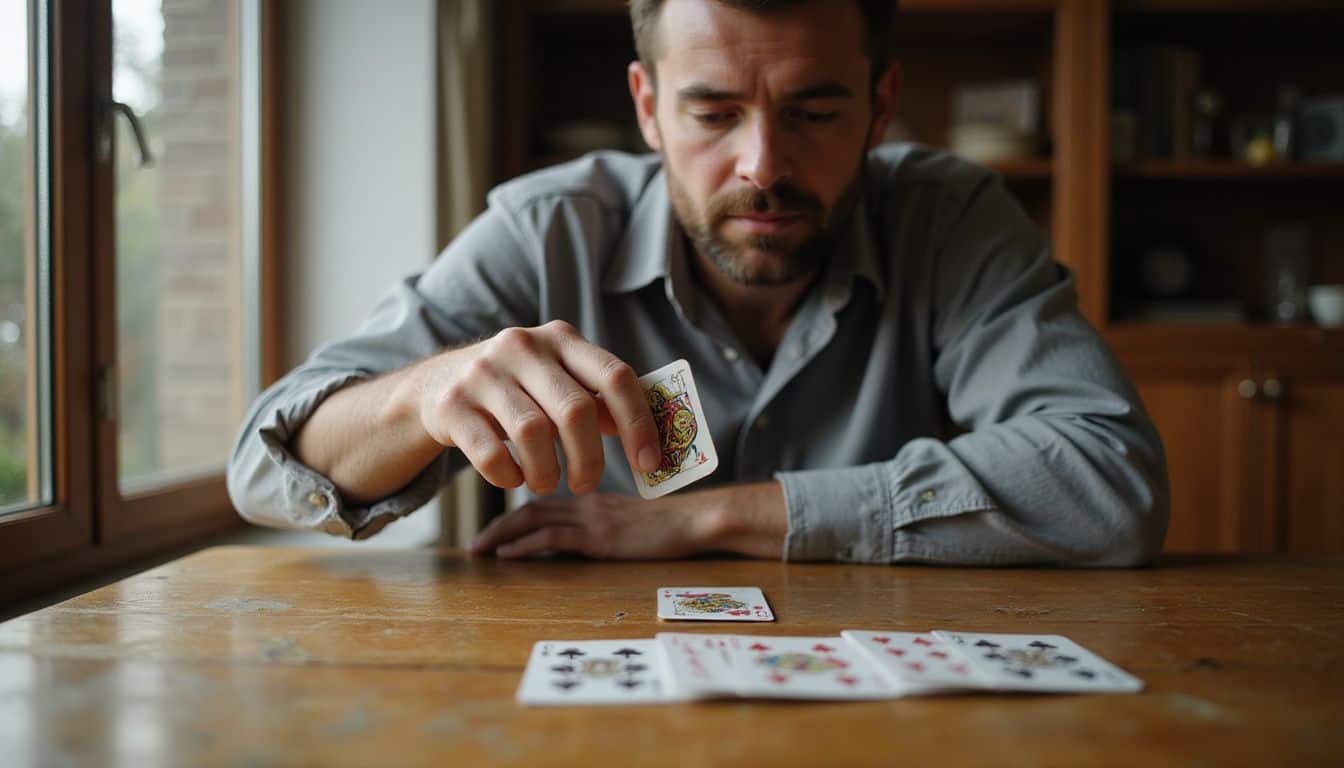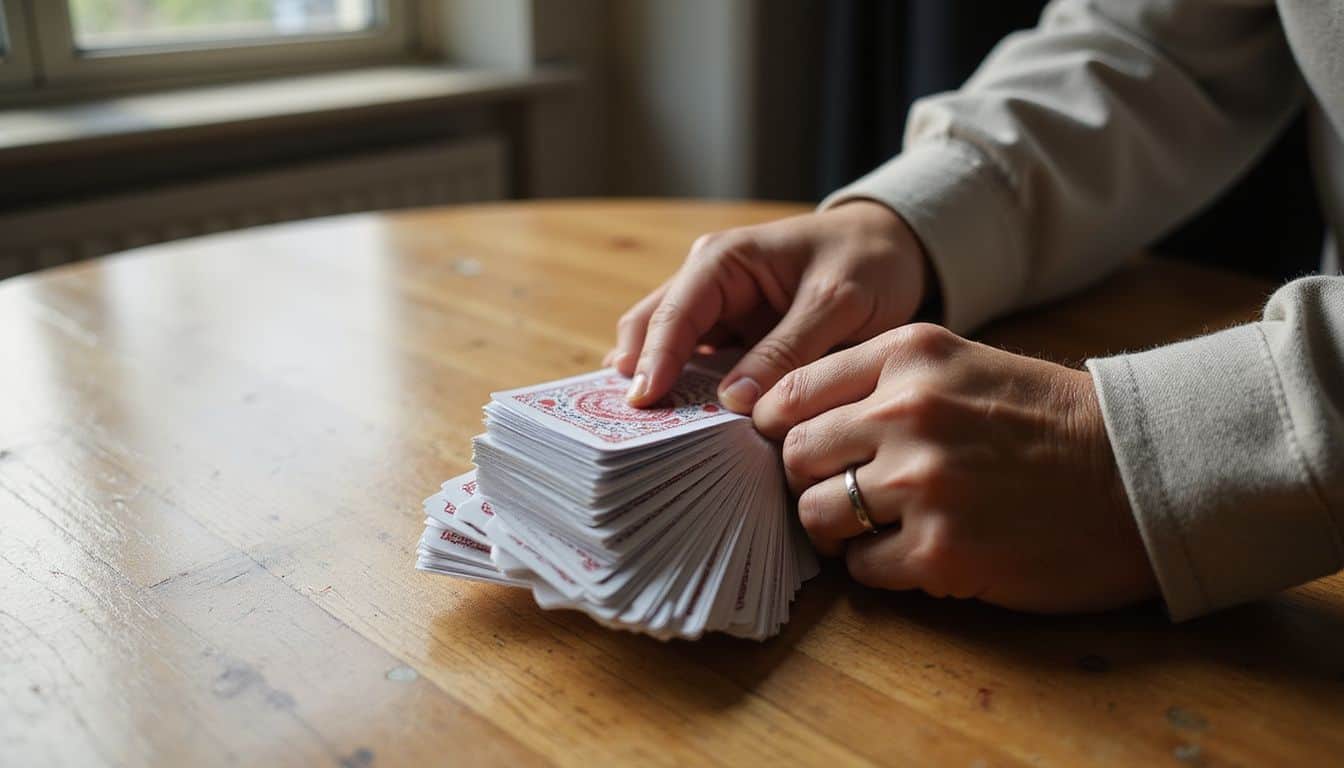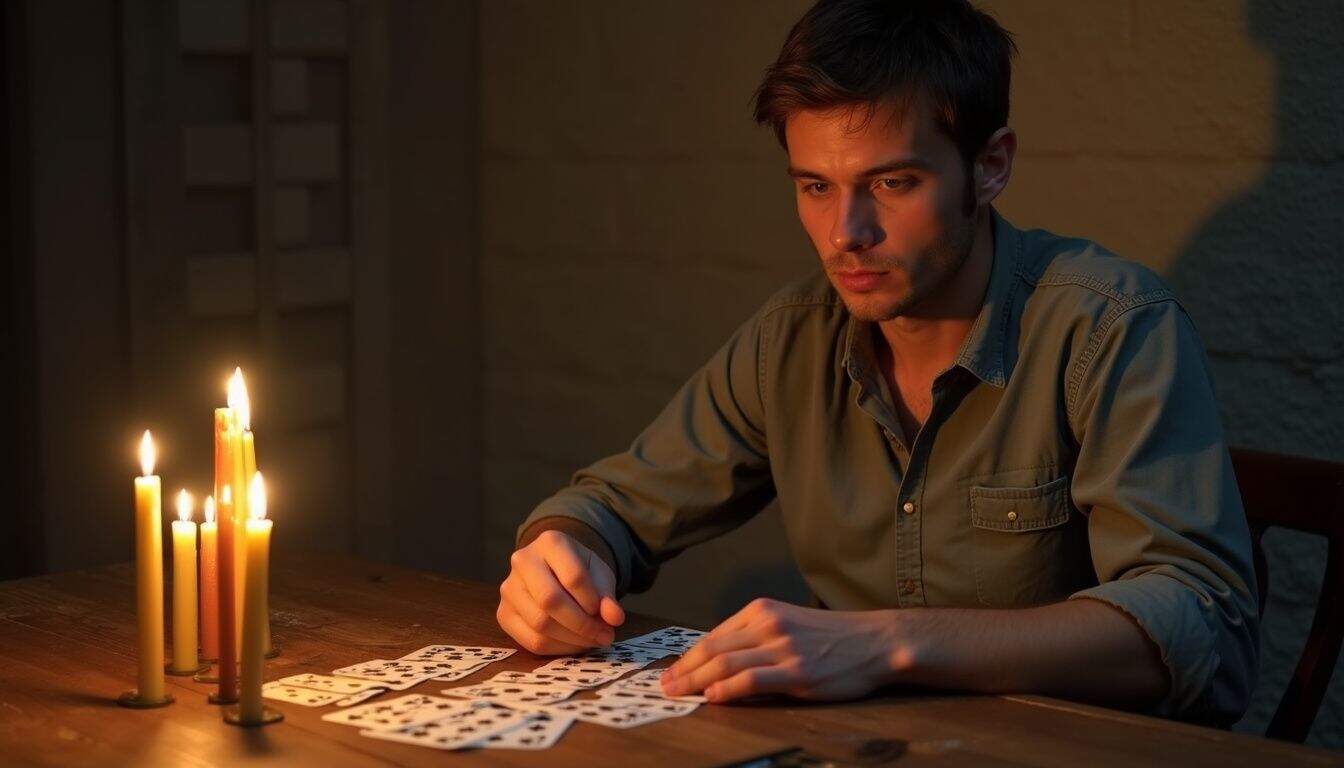Ever wonder if your favorite card games rely on pure luck or actual skill? Random number generation, or RNG, plays a huge role in nearly every card game you’ve ever played, from the moment cards get shuffled to the effects that trigger during gameplay.
This guide breaks down seven key ways randomness impacts your card game experience, helping you understand when luck takes over and when strategy matters most. Are card games RNG… and does it even matter?
Key Takeaways
Card games use Random Number Generators (RNG) to control shuffling, card draws, and random effects, creating unpredictable gameplay experiences.
RNG adds excitement and forces creative strategies, but excessive randomness can frustrate players and reduce skill-based decision making.
Game designers balance RNG through weighted probability tables, streak breakers, and controlled randomness to maintain fair competitive play.
Hearthstone uses four RNG types including coin flips and massive card pools, making randomness both disliked and popular among players.
Online poker platforms use certified Pseudorandom Number Generators with third-party audits to ensure fair card distribution and game integrity.
Table of Contents
Understanding RNG in Card Games

RNG controls many parts of card games, from the moment you shuffle your deck to the cards you draw each turn. Random number generators work behind the scenes, creating the unpredictable moments that make each game feel fresh and different.
What is RNG in card games?

RNG stands for “Random Number Generator” or “Random Number Generation” in card games. This system creates seemingly random numbers using computers, mimicking natural chance events that happen in physical card games.
According to 500-casino.net, RNG is essential for fair outcomes in online card games where players can’t physically shuffle decks or draw cards themselves.
Two main types exist in digital card games: True RNG and Pseudorandom RNG. True RNG measures unpredictable physical events from the real world to generate numbers. Pseudorandom RNG uses complex algorithms and seed values to create number sequences that appear random.
Most collectible card games and strategy games rely on pseudorandom systems because they’re faster and more practical for game mechanics. Card draw sequences, shuffling processes, and random card effects all depend on these random number generators to ensure fair gameplay and maintain game balance across different player experiences.
How does RNG work in card games?

Card games use random number generation to create unpredictable outcomes through specialized algorithms. These systems generate sequences of numbers with no predictable pattern, ensuring each card draw feels genuinely random.
Pseudorandom RNG dominates modern card games because it offers speed and efficiency that true randomness cannot match. Seed values act as starting points for these algorithms, determining the fairness and quality of randomness players experience.
Digital card games like Hearthstone rely on these mathematical formulas to simulate the natural chaos of shuffling a physical deck.
True randomness in digital games comes from algorithms that mimic the unpredictability of nature itself.
Game designers implement RNG systems that distribute cards fairly across all players while maintaining the element of surprise. Provably Fair systems take this concept further by allowing players to verify randomness using cryptographic methods.
These verification tools communicate transparency to competitive gaming communities who demand proof of fair play. The algorithms work behind the scenes, processing millions of calculations per second to ensure each card appears at the right moment.
Analytics teams study these randomised outcomes to balance gameplay mechanics and maintain player satisfaction across different skill levels.
Examples of RNG Elements in Card Games

Card games use randomness in ways that might surprise you, from the simple act of drawing your next card to complex effects that can flip the entire match. These random elements create the unpredictable moments that make each game feel fresh… even when you’re playing the same deck for the hundredth time.
How does drawing cards involve RNG?

Drawing cards creates the most basic form of random number generation in card games. Each card drawn can be any card in the remaining deck, making every draw unpredictable. The shuffle process randomizes card positions before play begins, ensuring no player knows the exact order.
This randomness directly influences strategy since players must make decisions without knowing which cards they’ll receive next.
Card draw mechanics introduce genuine uncertainty into understanding what RNG means in gaming. The likelihood of drawing specific cards changes based on previous draws, creating dynamic probability shifts throughout each match.
Some games feature mechanics that alter the probability of drawing certain cards, adding layers of complexity to the random selection process. This fundamental randomness affects wins and losses, forcing players to adapt their decision-making based on incomplete information rather than perfect knowledge.
Why is shuffling decks random?

Shuffling creates randomness because it disrupts predictable card patterns through physical manipulation. Human shuffling acts as a form of pseudorandom number generation, mixing cards in ways that make their final positions unpredictable.
Riffle and mash shuffling are most effective for randomization, breaking up any sequences that might exist from previous games or arrangements.
Proper shuffling requires more effort than most players realize. At least eight to nine riffle shuffles are recommended for decks over 52 cards to achieve true randomness. Inadequate shuffling can create predictable patterns, affecting outcomes and giving certain players unfair advantages.
Back and forth dealing improves randomness and reduces shuffles needed, while true randomness can result in clustering of identical cards that might seem suspicious but actually proves the shuffle worked correctly.
What are random card effects in games?

Random card effects bring chaos to your carefully planned strategies. These effects trigger unpredictable outcomes that can swing matches in seconds. Picture drawing a card that deals random damage between 1 and 10 points, or summoning a creature with unknown abilities.
Magic: The Gathering features cards like “Chaos Warp” that shuffle target permanents into libraries and reveal random replacements. Hearthstone takes this further with cards generating completely random spells or minions from massive pools.
Coin-flipping mechanics represent the purest form of random card effects. Some cards require players to flip coins for success or failure, creating binary outcomes that ignore skillful play entirely.
Variable damage effects add another layer, where identical spells might deal 3 damage one turn and 7 the next. Random targeting systems can redirect your carefully aimed spells to unintended victims.
These mechanics create simulations of real-world unpredictability, but they also generate significant player frustration. Game difficulty spikes dramatically during unlucky streaks, while expectations crumble under RNG’s weight.
Hidden information becomes meaningless since random outcomes override strategic planning.
Randomness is the spice of card games, but too much spice ruins the dish.
Advantages of RNG in Card Games

Random elements in card games create thrilling moments that keep players on edge, turning each match into an unpredictable adventure. This chaos forces gamers to think fast and adapt their tactics, making every decision feel fresh and meaningful.
How does RNG add excitement and unpredictability?

RNG transforms card games from predictable puzzles into thrilling adventures. Each draw creates suspense as players wonder what powerful card might appear next. This randomness builds excitement because outcomes remain uncertain until the very last moment.
Players experience genuine surprise when they pull exactly the right card at the perfect time, or face unexpected challenges that force quick thinking.
Unpredictability keeps every match fresh and engaging. Random number generation ensures no two games play out identically, even with the same decks and opponents. This variety creates comeback potential where losing players can suddenly turn the tide with lucky draws.
Social media buzzes with clips of incredible RNG moments that showcase these dramatic reversals. The element of chance means skilled players must adapt constantly, making victories feel more rewarding and defeats less crushing.
How does RNG encourage creative strategies?

Beyond creating thrills, random number generation encourages players to think creatively and modify their tactics. Players encounter unpredictable situations that require them to develop new approaches instead of relying on memorized patterns.
Designing RNG promotes inventive deck-building and adaptation, making each match feel fresh and challenging.
Adaptive randomness adjusts outcomes based on player actions, fostering creativity in ways that static game mechanics cannot match. Players often completely change their strategies mid-game after drawing unexpected cards or facing random effects.
RNG introduces new challenges and scenarios for strategic variety, keeping games engaging and unpredictable. Controlled chaos through RNG supports innovative gameplay by creating situations where standard tactics might fail, encouraging players to improvise and experiment with different combinations.
The best card players aren’t those who memorize every possible outcome, but those who can adapt quickly to whatever randomness throws at them.
How does RNG create unique gameplay experiences?

RNG transforms every card game session into a distinct adventure that players can’t predict or replicate. Modern RNG determines loot drops and random events, enhancing experiences by creating scenarios that feel fresh each time you sit down to play.
Developers use RNG in coding to create diverse mechanics and item probabilities, ensuring that no two matches follow the same pattern. Seeds in procedural generation allow for repeatable, shareable gameplay while maintaining the core unpredictability that keeps players engaged.
Each shuffle, each draw, each random effect creates a new puzzle for players to solve.
Simulations can test thousands of game scenarios for varied experiences, proving how random number generation shapes countless possible outcomes. Dynamic RNG systems help maintain balance as games evolve, adjusting probabilities based on player behavior and game state.
Players face different challenges in each session because RNG introduces elements they cannot control or anticipate. This unpredictability forces creative thinking and adaptability, making skilled players demonstrate their expertise across diverse situations rather than memorized patterns.
The randomness creates stories worth sharing, memorable moments that emerge from the unexpected collision of chance and strategy.
Challenges of RNG in Card Games

While RNG brings excitement to card games, it also creates serious problems that can frustrate players and impact competitive balance — from crushing bad luck streaks that make skilled players feel powerless, to random effects that can completely override strategic planning and turn matches into coin flips rather than tests of ability.
Why can too much randomness be frustrating?

Excessive RNG creates a perfect storm of player frustration. A late 2014 Hearthstone survey revealed that random number generation was the most disliked aspect of the game. Players feel powerless during matches, their skilled decisions get overshadowed by pure luck.
Victory feels hollow, defeat feels unfair. High levels of chance disrupt the traditional balance that makes card games exciting in the first place.
Players often blame single RNG events for losses, overlooking broader factors.
Inconsistent gameplay experiences drive players away from their favorite titles. Random outcomes make it nearly impossible to develop reliable strategies or improve through practice.
Skilled players watch their carefully planned moves crumble because of a bad dice roll or unlucky card draw. This creates a cycle where success seems dependent on chance rather than ability, leaving dedicated gamers questioning whether their time investment matters at all.
Does RNG reduce player control or skill?

RNG creates a heated debate in gaming circles because it can level the playing field in unexpected ways. Amateurs sometimes beat professionals with lucky draws, which reduces the skill gap between players of different experience levels.
This randomness means that even the most skilled player can lose to someone with less experience but better card draws. Professional players often find this frustrating because their years of practice don’t guarantee victory against newcomers who get fortunate with random number generation.
Card draws can create unwinnable games that impact player control significantly. Poor shuffling or bad luck with initial hands can doom a player before they make their first strategic decision.
Players lose agency over their fate as RNG determines crucial game elements like which cards they receive and what effects trigger. Skill-based victories feel more satisfying than wins influenced by luck, which explains why many competitive players prefer games with minimal random elements.
The fairness of RNG remains a contentious topic, especially regarding competitive outcomes where prize money and rankings are at stake.
This brings us to examine how game designers attempt to balance these random elements…
Balancing RNG in Game Design

Game designers face a tricky challenge when they add RNG elements to their card games — too little randomness makes games predictable and boring, while too much chaos frustrates players who want their skills to matter.
Smart developers use specific techniques like weighted probability tables, seed-based algorithms, and player choice mechanics to control how much luck influences each match. They test different RNG systems extensively, measuring player satisfaction and game balance through data analytics and player feedback loops.
The best card games create that sweet spot where random events feel exciting rather than unfair, giving players just enough control to showcase their strategic thinking while keeping outcomes uncertain enough to stay thrilling.
Setting clear goals for RNG use

Game designers must define specific goals before adding RNG elements to their card games. These goals typically fall into four main categories: diversity, adaptability, drama, and fairness.
Diversity goals ensure players encounter varied scenarios across multiple games, preventing repetitive experiences. Adaptability goals help balance power levels between different player skill sets.
Drama goals create exciting moments through unexpected outcomes and close calls. Fairness goals distribute advantages evenly among all participants over time.
Clear RNG objectives guide every design decision throughout development. Designers assess RNG levels constantly to maintain player satisfaction and enjoyment. They establish hard-coded elements that provide player control amid randomness.
This controlled chaos approach keeps gameplay engaging without overwhelming participants. Effective RNG enhances replayability by presenting new challenges each session. Balance remains crucial to prevent wasted effort or reduced agency among players.
Selecting appropriate sources of randomness
Card designers must choose their RNG sources carefully to create balanced gameplay. Seven main sources exist: card draw mechanics, special card effects that trigger randomly, deck order shuffling, card pool selection, variable costs, fluctuating stats, and unpredictable card interactions.
Each source serves different purposes in game flow and strategy.
Smart designers use scripted randomness and “Marble Bag” techniques to ensure varied outcomes while maintaining fairness. Hidden rerolls improve player experiences without their awareness, while adaptive randomness adjusts based on player actions.
Seeds allow repeatable and shareable game experiences, making tournaments and content creation possible. Procedural generation combines randomness with set rules for consistency, ensuring games feel fresh but never completely chaotic.
Methods to control RNG outcomes
Choosing the right randomness sources sets the foundation, but controlling those outcomes makes the real difference. Game designers use several proven techniques to manage random number generation without destroying the core excitement.
- Simulations test thousands of combinations for hard data – Developers run automated tests across massive sample sizes to identify problematic RNG patterns before launch.
- Playtests with real players gather slower but valuable feedback – Human testing reveals how randomness feels during actual gameplay, catching issues that data alone misses.
- Streak breakers and pseudo-randomness balance excessive luck – Systems prevent extreme winning or losing streaks by adjusting probabilities after consecutive similar outcomes occur.
- Hidden rerolls and context-aware RNG enhance player perception of fairness – Games secretly reroll bad outcomes or adjust chances based on current game state without players knowing.
- Dynamic AI can analyze and adjust RNG patterns for balance – Machine learning algorithms monitor gameplay data and automatically tweak randomness levels to maintain competitive balance.
- Marble Bag approach offers controlled randomness experience – This method ensures specific outcomes appear within set ranges, like guaranteeing rare cards after certain intervals.
- Player involvement via custom decks or sandbox environments aids balancing – Giving players control over some random elements lets them influence outcomes while preserving unpredictability.
- Weighted probability tables shift odds without removing chance – Designers can favor certain outcomes over others while maintaining the illusion of pure randomness.
Examples of Card Games and Their Use of RNG

Different card games use randomness in their own unique ways, creating distinct gameplay experiences for players. Each game balances RNG elements with skill-based mechanics, showing how random number generation can shape everything from casual matches to competitive tournaments.
How does Hearthstone use RNG?
Hearthstone employs four distinct types of random number generation that shape every match. Coin Flip mechanics create simple yes-or-no outcomes, while Random Target effects select enemies or allies unpredictably.
Small Set randomness picks from limited options like the Shaman Hero Power “Totemic Call,” which summons one of four random totems. Catalogue RNG draws from massive card pools, creating wild swings in power level.
Card draw serves as the primary RNG source, randomly selecting cards from your deck each turn. Legendary cards like Gelbin Mekkatorque and Yogg-Saron, Hope’s End introduce massive randomness that can completely flip games.
Shaman spells showcase heavy RNG integration through cards like Crackle, Lightning Storm, Ancestor’s Call, and Far Sight. The Discover mechanic balances randomness with player choice, offering three random options for selection.
This design sparked controversy in 2014, making RNG both the most disliked and seventh most liked aspect in player surveys.
What role does RNG play in Poker?
Poker relies heavily on RNG to ensure fair card distribution and maintain game integrity. Online poker platforms like PokerStars and partypoker use sophisticated Pseudorandom Number Generators (PRNG) that undergo rigorous third-party audits.
These certified RNG algorithms create the unpredictable card sequences that make each hand unique, preventing any player from gaining an unfair advantage through predictable patterns.
Independent testing agencies regularly verify these RNG systems to build player trust across the poker community. Modern platforms implement “Provably Fair” technology, allowing players to independently verify game outcomes and confirm the randomness of each deal.
AI and machine learning systems now monitor RNG output in real-time, detecting any anomalies that might compromise game fairness. This constant oversight ensures that every shuffle, every deal, and every community card reveal maintains the random nature that makes poker both challenging and exciting for players worldwide.
How is RNG applied in Magic: The Gathering?
Magic: The Gathering applies RNG through deck randomization and card drawing mechanics. Players shuffle their decks before each game, creating unpredictable card sequences that shape every match.
Card draws introduce chance into gameplay, as players cannot control which cards they receive each turn. This randomization affects strategy since players must adapt to whatever cards they draw from their shuffled decks.
RNG impacts game experience through both deck construction and match outcomes. Skilled players build decks to minimize bad draws, but luck still influences results. Players often debate whether skill can truly overcome random elements in competitive play.
Some card effects also contain random elements that create unexpected interactions during matches. This balance between strategic deck building and random card draws leads us to examine whether card games can function without any RNG elements at all.
Can Card Games Exist Without RNG?

Some card games work perfectly fine without any random elements at all. These games rely on pure strategy, memory, and skill… making every move count more than luck ever could.
What are examples of non-RNG card games?
Prismata stands out as a competitive card game that eliminates randomness entirely. Victory depends solely on player skill, with no hidden information or chance elements affecting outcomes.
Chess serves as the classic example of non-random gameplay, where every move creates predictable consequences. These games demand more from players’ strategic thinking and foresight abilities.
Non-random card games like Prismata borrow strategy elements from deckbuilders but use a fixed pool of units instead of shuffled decks. Players face identical starting conditions, making skill the only determining factor in matches.
The design required extensive testing to achieve balanced, luck-free gameplay that remains engaging. Card games without rng risk becoming predictable for some players, yet they offer pure strategic competition that many competitive gamers prefer over chance-based mechanics.
How does removing RNG affect strategy and gameplay?
Removing random number generation from card games transforms strategy into pure skill contests. Players make decisions based on complete information, not luck. Skill improvement accelerates because outcomes link directly to player choices.
Games like Prismata demonstrate this approach by focusing on strategic decisions over random events. Fixed pools and no hidden information ensure fairness while maintaining variety.
Players face less frustration from unwinnable, luck-based situations that plague traditional card games.
Strategic depth increases dramatically without RNG elements clouding decision-making. Each move carries weight because players control every outcome through careful planning. Non-RNG design creates excitement through strategic brilliance rather than fortunate draws.
Achieving complete removal of random number generation requires significant design effort, but rewards players with consistent, skill-based gameplay. Memorable moments emerge from clever tactics and superior planning, not random card effects or lucky shuffles.
How Will RNG in Card Games Evolve in 2025?

RNG systems will become smarter and more responsive in 2025. Dynamic RNG systems and AI will help maintain balance as games evolve. Developers may increasingly use advanced AI to analyze and adjust RNG patterns in real time.
Context-aware and adaptive randomness could become more prominent, creating systems that respond to player behavior and game states. These intelligent systems will move beyond simple random number generation to create more meaningful randomness that serves specific gameplay purposes.
Companies may face growing pressure for transparent or “provably fair” systems that players can verify. Game economy and monetization experts like Jay Sampat, MBA, may influence future RNG models to balance player satisfaction with business goals.
Richard Garfield’s “Luck in Games” talk from September 14, 2013, and other research may guide future design decisions. RNG will continue to be used to level the playing field among varying skill levels while maintaining excitement, fairness, and replayability in card games.
Advanced algorithms will likely create more sophisticated randomness that feels natural rather than purely mechanical.
People Also Ask
What does RNG mean in card games?
RNG stands for random number generation, which creates unpredictable outcomes in digital card games. Most traditional card games use physical shuffling instead of computer algorithms.
Do all card games rely on randomness?
Physical card games depend on shuffling to create random card order. Digital versions use RNG systems to simulate this randomness, making each game different and unpredictable.
How does RNG affect your strategy in card games?
RNG limits how much you can control outcomes, since you cannot predict which cards will appear next. Good players adapt their tactics based on probability rather than trying to guess exact results.
Can you beat RNG in card games?
You cannot control random outcomes, but skilled players work with probability to make better choices. Understanding odds helps you play smarter even when luck plays a big role.
References
https://www.webopedia.com/crypto/learn/what-is-rng-gaming-randomness-explained/
https://www.soft2bet.com/news/igaming-rng-meaning (2024-12-23)
https://hearthstone.fandom.com/wiki/RNG
https://outsidetheasylum.blog/randomness/
https://www.freecodecamp.org/news/rng-meaning-what-does-rng-stand-for-in-gaming/ (2021-09-15)
http://blog.prismata.net/2014/12/02/removing-rng-eliminating-luck-can-benefit-strategy-card-games/
https://uu.diva-portal.org/smash/get/diva2:1805620/FULLTEXT01.pdf
https://medium.com/@GWBycer/balancing-the-chaos-of-rng-8cf9ce7de103
https://www.gamedev.net/tutorials/game-design/game-design-and-theory/luck-in-games-why-rng-isnt-the-answer-r3877/ (2014-10-24)
https://indieklem.substack.com/p/18-how-to-design-better-randomness?utm_medium=web
http://gangles.ca/2016/09/12/hearthstone-randomness/ (2016-09-12)
https://sccgmanagement.com/sccg-news/2025/4/17/what-should-you-know-about-the-role-of-rng-in-online-poker/ (2025-04-17)
https://rpgcodex.net/forums/threads/card-games-and-nature-of-rng.121432/ (2018-04-19)
https://www.gamedeveloper.com/design/the-role-of-luck-why-rng-isn-t-the-answer
